|
No Kill Huntsville formed in January of 2012. The original group was a couple dozen nonprofit shelter leaders, nonprofit leaders, rescue group leaders and animal advocates. The mission of the organization is, and has always been, to encourage the City of Huntsville to adopt progressive animal shelter programs and to end the archaic practice of destroying healthy and treatable pets using tax dollars. We had no idea if we would succeed when we first met, but we knew we had to try. A number of us had been working independently of each other to seek change and we felt we would do better by combining our efforts. There were numerous places across the country where the lives of shelter animals were being saved and we knew Huntsville could do the same. Prior to the formation of No Kill Huntsville, the live release rate at Huntsville Animal Services had been incredibly low for a very long time. Although most city officials and members of the pubic presumed the shelter would not needlessly destroy animals, that is (unfortunately) exactly what happened for many years. The animals being destroyed were not just those who were suffering or irremediably ill, but animals who were perfect healthy and treatable. We spent approximately a year preparing to make our pitch to the City of Huntsville to adopt the programs and services of the No Kill Equation which we still promote to this day. We had contacts across the country who had used the equation to reform their own communities and we knew the same methods would work here. The equation is a series of programs which work in concert with each other to both reduce shelter intake (what we call “keep them out” programs), to increase shelter output (what we call “get them out” programs) and which both reduce intake and increase output. The genius of the equation is that it can be adopted in any community regardless of resources and bring about change not in years but very fast. Some places have become No Kill Communities literally overnight by using the equation. We realized it would take some more time in Huntsville simply due to the number of animals who had been destroyed over a period of years and due to prior resistance on the part of city officials to embrace the programs themselves and without the need for our political advocacy. We hit some high walls and some big speed bumps along the way. In early 2013, the shelter leadership was offered free help by subject matter experts which we would have paid for. This would have been confidential, hands on help inside the shelter to examine policies, procedures and programs in order to determine how to implement the equation quickly by building on current operations. This help was refused. It was only when we hit that wall that we had no alternative but to take the subject to the public and began our public information campaign which continues to this day. We held a free public workshop, we used the media to reach people, we paid for Lamar billboard space around town to introduce people to the concept of No Kill, we showed a documentary film at Lee High School, we used social media and our fully developed website to reach more people and we engaged in a series of meetings with city officials. Our group became smaller over the years; a core group of 6 members remain to this day. We had a lot of opposition and much of it came from a surprising source: people in the rescue community. It was not easy and we lost friends along the way, something we were told would happen. At one point a shelter employee set up a hate page on Facebook which was encouraged by people in the rescue community as well as members of the shelter staff. The page was ultimately removed with the help of the city. Things began to change quickly in 2014 when we met with newly appointed City Administrator John Hamilton. He was on board with the No Kill Equation from our first meeting with him in March of 2014 and for that we remain incredibly grateful. Due to a combination of animal welfare advocacy, city leadership and public participation, the live release rate at the shelter began to improve over a period of time. It reached the 90% benchmark in 2015 and has remained essentially at that level for the last three years. In April of 2016, we began promoting a CAPA – a Companion Animal Protection Act – which we later called the Huntsville Animal Protection Act. We promoted the HAPA in earnest during 2018 in meetings with city council members and candidates for city council. For us, the HAPA is about maintaining legacy to ensure that the shelter does not go back to the old ways of functioning no matter who leads the city or who runs the shelter. The HAPA would have set measurable standards for the shelter to achieve and would have required certain standards for animal housing, care and placement and prior to euthanizing animals. Because work was already taking place to revise the entire animal code for the city, the city chose to not implement the HAPA and to instead incorporate much of the spirit of the HAPA into the revisions to Chapter 5 of the City Code. This was not the outcome we had hoped for, but it is the outcome chosen by the city. We are left with no alternative to accept the city’s decisions and celebrate the aspects of the ordinance used to change the city code which reflect the intent of the city moving forward and expectations regarding the operation of Huntsville Animal Services. The City's statements of intent are here. The City's expectations of the shelter policies are here. In light of the revisions to the city code, we have suspended our promotion of the HAPA for the foreseeable future. Should a time come when we feel the city is open to codifying more of the aspects of the shelter operation, we will consider promoting the HAPA again.
We will continue to maintain our website and obtain copies of the shelter statistics and euthanasia reports from the City Attorney’s Office each month to ensure the city does not back slide and to continue our work monitoring the number of dogs destroyed for behavior and kennel stress. We will also promote Chipathon events twice a year (in March and July) to encourage people to have their pets microchipped to prevent them from entering the shelter (or to get them back home quickly). We will no longer maintain our Facebook page; it is a 7-day a week platform. It will go dormant unless a time comes when we see the need to use it to reach people. Any questions or comments about our group, the No Kill Equation or the state of animal welfare in Huntsville and Madison County can be addressed to us using our website and our email account. There is still much work to be done in Huntsville and city officials are the first to acknowledge that fact. We hope you will join us in congratulating city leaders on the progress made to date. We also hope you will join us as we continue to hold the city accountable while stepping back into the shadows for now. We are told that the shelter will continue to develop policies and programs which promote life-saving in our community and that we are not limited by the 90% benchmark which ordinarily is an indication of progressive programs. We hope a time comes when the city decides that it can call itself a No Kill community and will do so with pride.
0 Comments
Huntsville and Huntsville Animal Services have come a long way. When No Kill philosophies were first shared with city officials in November of 2008, the Live Release Rate at our municipal animal shelter was 25%. Three out of every four animals entering the building were destroyed. When we formed our coalition in January of 2012 and began our research phase, the rate had risen to 34%. Some progress had been made, but it was incredibly slow and thousands of animals continued to die each year. When we took our topic to the public in the summer of 2013, the rate had risen to 41% and by the end of that year it had reached 47%. Again, progress had been made but it was slow. More than half of the animals entering the shelter building continued to be destroyed not because anything was wrong with them, but because that was just what had been done for so long. Those who lead the shelter felt they were doing the best they could with limited resources, felt they were doing a great job and were happy with the progress which had been made in a few short years. We, as a coalition, have always sought one thing: for the destruction of healthy and treatable animals in the shelter to end. We have always promoted the No Kill Equation to achieve that goal because it has been proven to work everywhere it has been fully embraced. Some elements of the Equation serve to keep animals from entering the shelter at all. Some serve to move animals through the system quickly if they do end up in the shelter. Some elements serve both purposes. The genius of the No Kill Equation is that it is a DIY type solution to changing how an animal shelter operates. It is very important to learn what has worked well (and what has failed) in other communities, but the No Kill Equation can be examined element by element and then implemented using the resources available in any community. When we first began interacting with the newly appointed City Administrator, John Hamilton, about our No Kill purpose and vision, he said, "you had me at hello." He listened to our input about use of the Equation and even took the elements of the Equation to create his own diagram which looks similar to the Parthenon in Greece. It did not matter that he viewed the elements in different ways. What mattered is that he understood how they worked together and still does to this day. The City of Huntsville and Huntsville Animal Services is about to mark a milestone and we think it is incredibly important to share it not only with the people who live and work in Huntsville, but with those across the country who have watched our progress and who may look to our community for guidance. No healthy and treatable animals have been destroyed in our municipal shelter strictly for space since September of 2014. That means that it has been almost 3 full years since the city engaged in population control killing. We have written before about issues with dogs being described as aggressive and then destroyed for public safety purposes. We fully realize that dogs who may be dangerous to people cannot be adopted out into the community and risk having someone injured or, worse yet, killed by a dog. We believe that for a period of time following September of 2014, some dogs were destroyed after either having been labeled as aggressive (when they were simply scared or traumatized) or after having deteriorated behaviorally from being in the shelter too long. Having said that, we know that the shelter leadership has taken steps to better evaluate dogs in the shelter environment (by having staff and volunteers trained by subject matter experts). We also know that the shelter leadership has developed enrichment programs for dogs to prevent them from deteriorating while in the shelter environment. We have also seen social media posts which clearly state that a certain dog is not doing well in the shelter as a means to market that dog more aggressively to get him or her out of the shelter in order to save a life. We know that there are still issues to be fine tuned at Huntsville Animal Services. We met with Mr. Hamilton on September 15th to talk about some of those issues and to offer some suggestions which may help the city. This is truly a work in progress and there is no such thing as being "done" with improving the shelter. Saving the lives of shelter animals is incredibly hard work and there are no days off. It takes committed city leaders like Mayor Tommy Battle and City Administrator John Hamilton. It takes a passionate Shelter Director like Dr. Karen Sheppard. It takes energized and educated shelter staff like Karen Buchan and Will Roberson. And it takes a huge number of volunteers, fosters, adopters, donors and supporters to help us maintain the current level of progress so that we never, ever go back to the way it was before. This is not an Us and Them solution. It is a We solution.
Congratulations to the City of Huntsville and to Huntsville Animal Services. We look forward to continued improvements in the shelter building and in program development. You have much to be proud of and we are incredibly pleased to have played a role in this process. Stay tuned. Things just get better from this point on. A significant event took place on July 29, 2013, in Huntsville, Alabama, regarding the animal welfare advocacy of our No Kill Huntsville coalition. It was the date of our No Kill Workshop which we held at the downtown branch of the Huntsville/Madison County public library. It was the first time that we took the phrase "No Kill" to the public and used it in an event to reach more people in our region; not just those people who attended the event, but those people who heard about the event in the media. We held the event to reach the public because we felt the time had come to seek public support for shelter reform in our area. We don't talk about it much now - because it is not our focus - but we went public with our issue only after the city declined free help from subject matter experts three months earlier. We felt we had hit a wall in our efforts to communicate effectively with city officials so we asked those same experts to address the public instead. 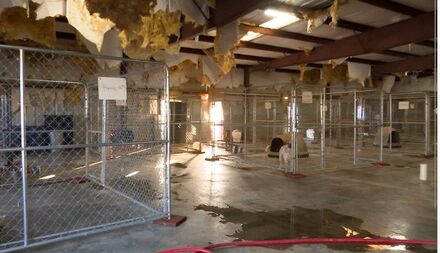 The room we reserved at the library was standing room only. The audience was a mix of animal rescuers, animal advocates, members of the public and even some opponents of our vision who said in advance that they opposed our philosophies and planned to cause a scene. Most in attendance likely did not notice the police officer we hired who stood in the back of the room to keep the peace if anyone got out of hand. Before the event started, we briefed him on our worries that some would cause a disruption and explained that he had been hired as a precautionary measure. He knew nothing about our topic, but picked up on the issues pretty quickly. "Why in the world would anyone oppose saving the lives of more animals?" he asked. Exactly, Officer Newby, exactly. Our workshop speakers were Mike Fry and Kelly Jedlicki. Mike was the award winning director of Animal Ark in Hastings, Minnesota who now leads an organization called No Kill Learning. Kelly is a pediatric nurse by day and also leads an advocacy group called Kentucky Pets Alive. Both did a wonderful job of explaining the phrase "No Kill" to our public and helping them understand some of the elements of the No Kill Equation which we have supported and promoted from the time our organization formed in early 2012. The workshop was scheduled to last 4 hours and could easily have gone on for 8 or 10 hours instead. We write a lot about our promotion of the programs and services of the No Kill Equation as a means to end the destruction of healthy and treatable animals in our municipal animal shelter. We refer to the equation elements which serve to reduce shelter intake as "keep them out" elements. We refer to the elements which serve to increase shelter output as "get them out" elements. Some elements are dual purpose in nature. Our workshop fell under the element called "Community Involvement and Public Relations." It was intended to put the phrase "No Kill" on the public radar and it did just that. 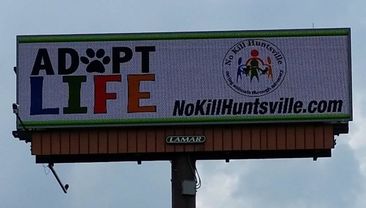 We see the 2013 workshop as one of a series of factors which led to change at the animal shelter. We had a meeting with city and county officials the next day, including Mayor Battle, and our workshop speakers were present. It was after this meeting that the shelter director (who did not attend the workshop) reached out to a member of our coalition to talk about making changes. The progress in the ensuing months was limited, but it was progress and the conversation was changing. We worked hard in the months and years after the workshop to keep the No Kill topic in the public eye using billboards and the media as we engaged in a series of meetings with city officials to continue to promote the No Kill Equation we still promote to this day. We hosted a showing of a documentary film about the No Kill Movement at Lee High School. A few consultants came and went over time, some paid for by us and some who engaged directly with the city to help fine tune program development and give real world advice to overcome problems. At the time we held the workshop in July of 2013, the live release rate at Huntsville Animal Services was 41%. Not quite 2 out of every three animals entering the building were destroyed. The healthy and treatable were destroyed along with the seriously injured and the suffering. By the end of 2014, the live release rate had risen to 73%, meaning that it practically doubled. At the end of 2016, the live release rate was 92%. The average monthly live release rate for the first months of 2017 is 95%. We were told by City Administrator John Hamilton recently that the city has not destroyed any healthy or treatable animals purely for space in almost three years. We would be sugarcoating our process here if we were to say that the last 4 years were easy or have been without conflict. They have not. Our advocacy was a 7-day a week job for years and we found ourselves on the receiving end of a lot of criticism for having the audacity to speak out for the greater good. We were subjected to open hostility by many in the community, some of whom are rescuers, shelter supporters and shelter volunteers. We always went to extraordinary lengths to make our message one of municipal accountability and not one of personal attacks or blame, often arguing among ourselves on word choice in periodic letters to city officials in order to strike the right balance between constructive criticism and respect. That diplomacy was not always returned as some found it necessary to personally attack the messengers for the fact that the message was necessary in the first place. Once the culture at the animal shelter begin to change dramatically and it took less effort to promote No Kill as a philosophy, we all agreed on one point. If someone had told us in early 2012 when we formed our group that the shelter would achieve and then surpass a 90% live release rate in a short period of time, but that we would end up battered, bruised and vilified in the process, we all still would have signed up for that. In a heartbeat. This has never been about us as individuals and has always been about saving the lives of shelter animals. It remains so today and we hope a time comes when we are no longer needed in this capacity at all. Congratulations to the City of Huntsville, our city leaders, the animal shelter leadership and to all of the rescuers, supporters, fosters, volunteers, donors and adopters for the tremendous success achieved at Huntsville Animal Service. We are so very thrilled to know that our geographic area is now considered a safe haven for dogs and cats in need and is an example for other communities to emulate. What a difference 4 years makes. Thanks, Mike. Thanks, Kelly. (workshop crowd image courtesy of WHNT)
|
No Kill Huntsville
Keep up with our updates and latest news regarding Huntsville becoming a no kill community. Archives
January 2022
Categories
All
image courtesy of Terrah Johnson
|
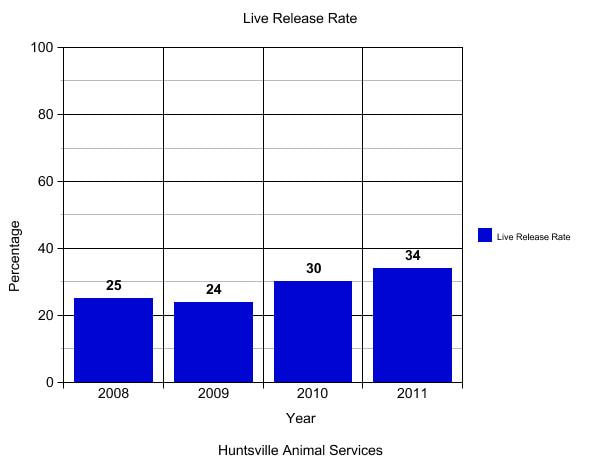
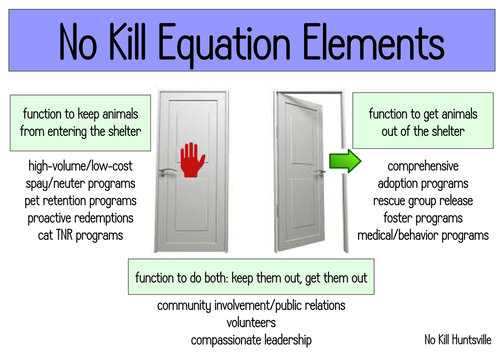
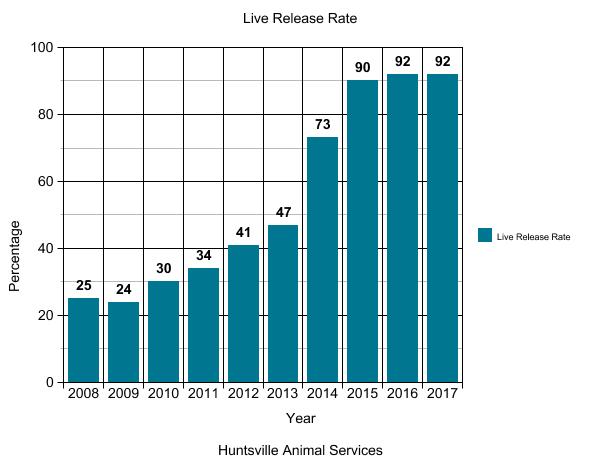
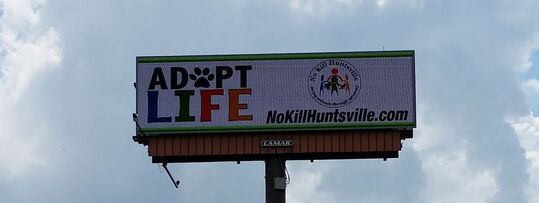

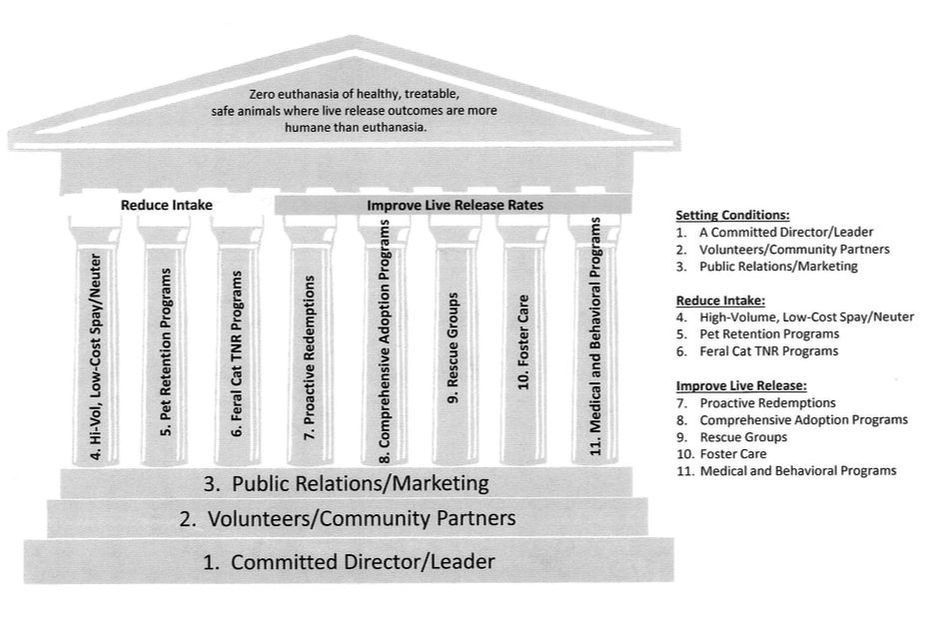
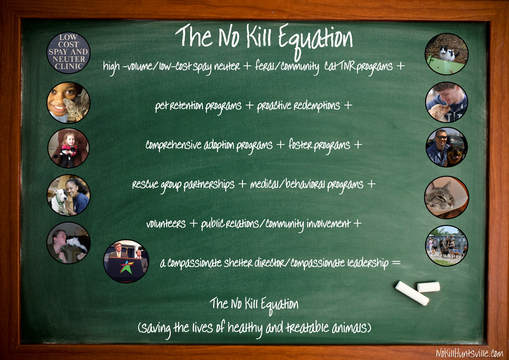
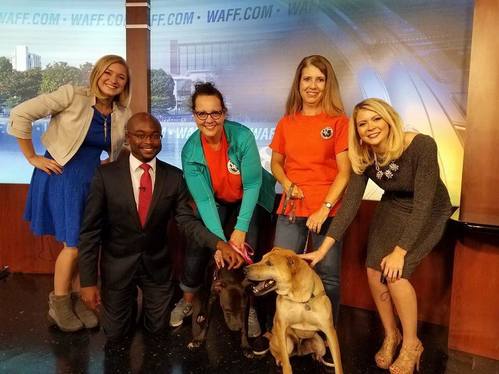
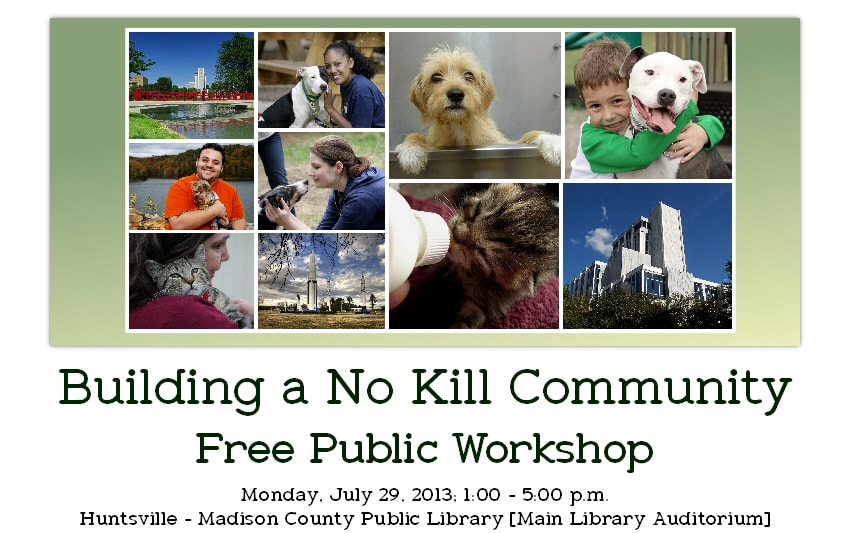
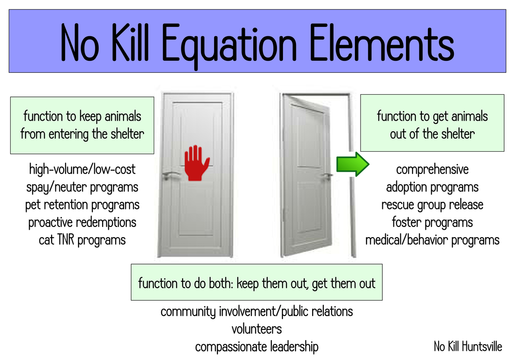
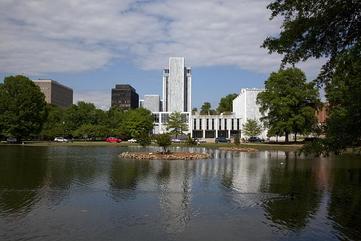
 RSS Feed
RSS Feed
